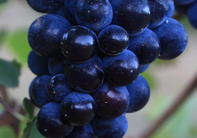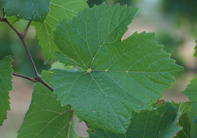Description
Pinot noir is a black wine grape variety associated with some of the world’s most expensive still and sparkling wines.
The name, derived from the French words that mean “pine” and “black”, refers to the compact conical shape of the grape bunches that resemble a pine cone and the dark colour of the berries. Pinot noir is believed to be one of the oldest clones of the Pinot family.
It is estimated that about 20 mutations of Pinot noir exist, of which Pinot gris and Pinot blanc are also cultivated in South Africa, albeit on small scale.
Origins
Pinot noir has been cultivated in Burgundy France since the first Century. Much of its fame is contributed to the Cistercian monks of Burgundy, who during the Middle Ages, planted vineyards everywhere they built monasteries. Over hundreds of vintages, these monks took detailed production records in which they also noted the areas where these vines flourished.
The monks in effect created the world’s first harvest reports and gave birth to the idea that a variety reflects the micro and macro conditions of the area, referred to as the “terroir”, in which it is planted. The church owned vineyards were distributed to families in Burgundy during the French revolution around 1789.
While it is a challenging variety to grow, production has expanded to various other countries over the years as more wine makers are trying to achieve the same quality of wine as associated with the Burgundy wines. Pinot noir has gone from being the thirtieth to seventh most planted variety between 1990 and 2010.
Other Names
The variety is also referred to as Spätburgunder in Germany, Brazil and Canada; Pinot Nero or Blauburgunder in Greece, Hungary and Italy; or Burgundac in the United States and Yugoslavia.Production in South Africa
Professor Abraham Izak Perold imported the Swiss BK5 Pinot noir clone around the 1920s and Muratie in Stellenbosch became the first farm to plant the variety in 1927. The variety at the time struggled to take off in other areas than Stellenbosch, because of the strong focus on the production of wine volumes instead of wine quality.
The quota system, introduced in the late-1950s, also prohibited production expansions. In the mid 1970s, Tim Hamilton Russel of Hamilton Russel Wines in the Hemel-en-Aarde Valley played a huge role in unlocking the true potential of Pinot Noir in the country, when he decided to produce the variety in spite of the quota system and the fact that the available clone was aimed at the production of sparking and not table wine.
Together with his then winemaker, Peter Finlayson, Russel proved the Hemel-en-Aarde Valley to be ideal for Pinot noir production. New Dijon clones, better suited for the production of fine table wines, became available in South Africa around the 1990s.
Together with the shift to the production of quality wines, these new clones resulted in many new regions also producing the variety, including Elgin, Doring Bay and Franschoek. Prof Perold crossed Pinot noir with Cinsaut to produce the truly South African variety, Pinotage.
Production Regions
The area under Pinot noir in South Africa has grown from representing 0,8% of the total area under wine grape production to 1,2% in 2016. While the variety is planted in all the production regions, the largest area under these vines is located in the Cape South Coast, followed by Stellenbosch, Robertson and Paarl. The variety thrives in cooler areas where the soils are rich in lime.Growth and Ripening
Pinot noir has moderate to low vigour. The production potential ranges between 8 t/ha to 14 t/ha, but yields should be kept low to enhance the quality of the wine. Grapes ripen early midseason, from the first half of February.
Berries and Leaves
The berries are small, slightly oval with colours ranging between violet-blue to purple and black. The skin is thin and tough, while the flesh is soft, sweet and juicy. The leaves are medium to large, round and entirely or poorly three-lobed.


 Burgundy in France produces the best Pinot Noir in the world. Not only are these some of the most haunting and special wines in the world, b...
Burgundy in France produces the best Pinot Noir in the world. Not only are these some of the most haunting and special wines in the world, b...